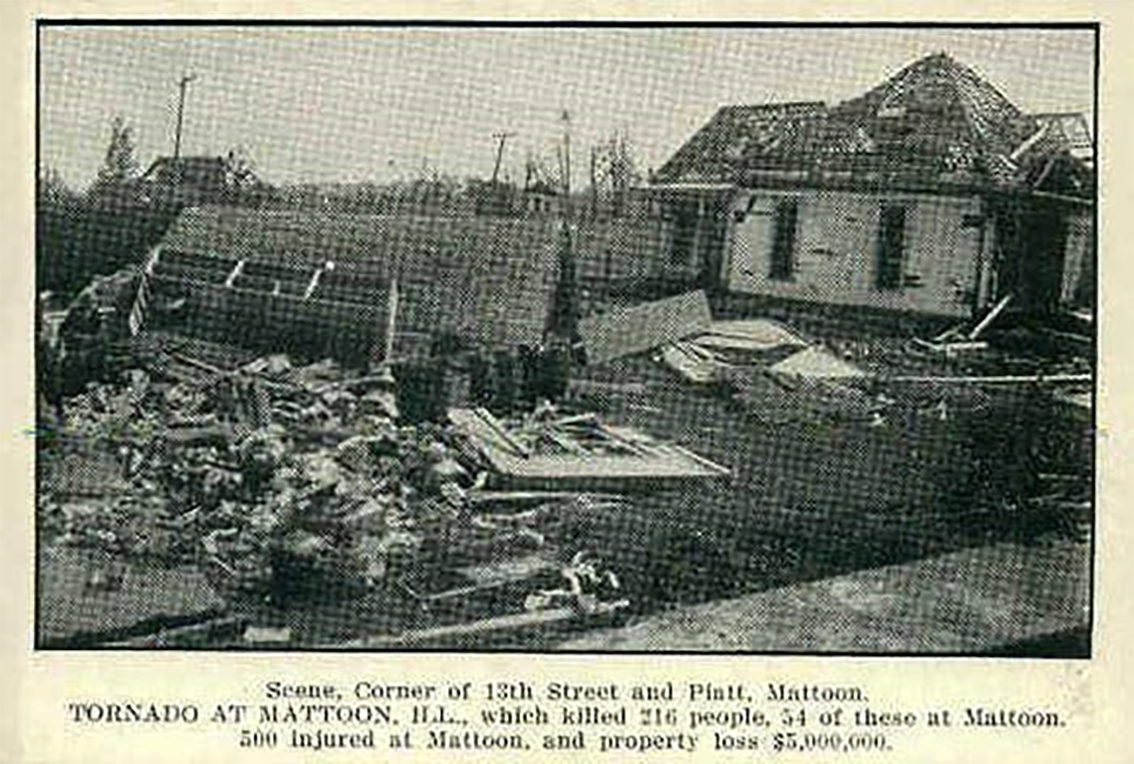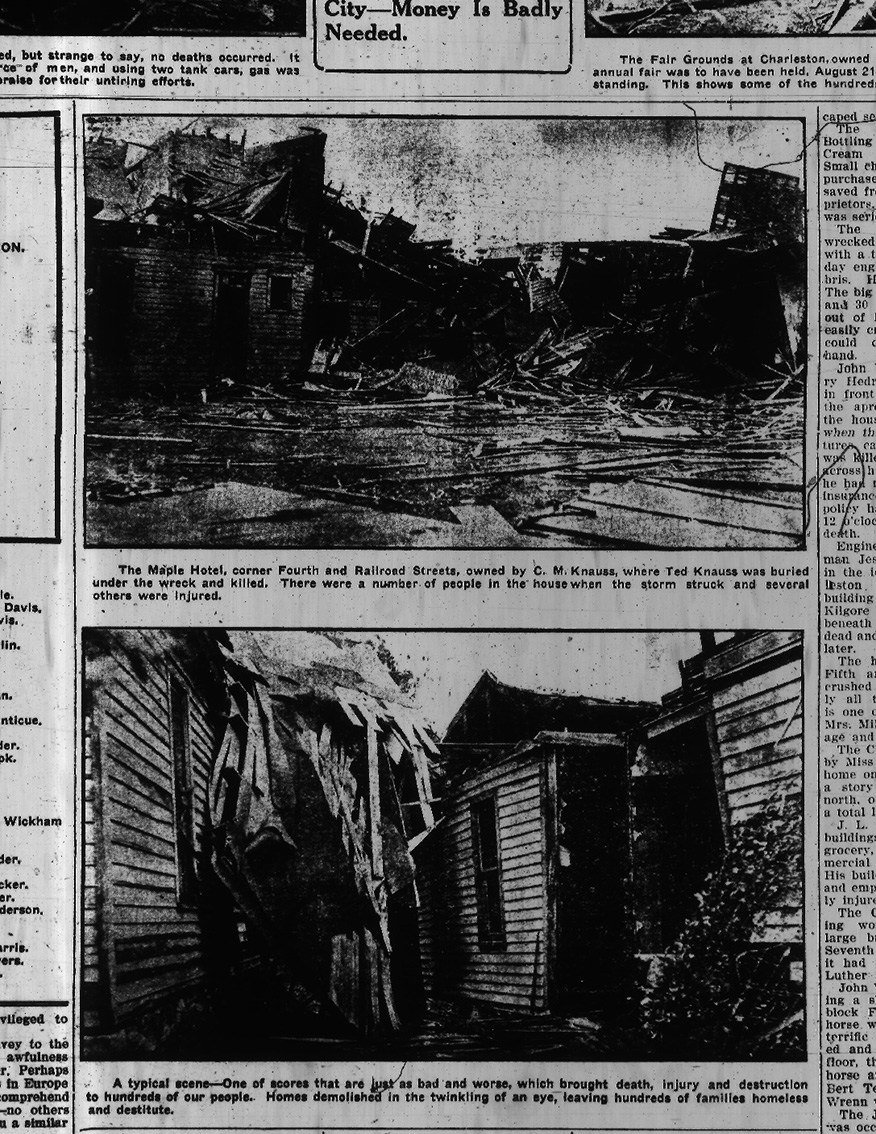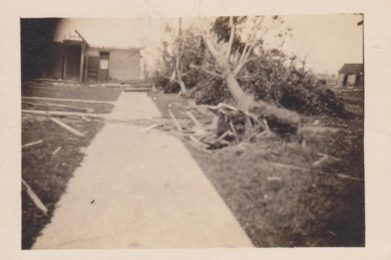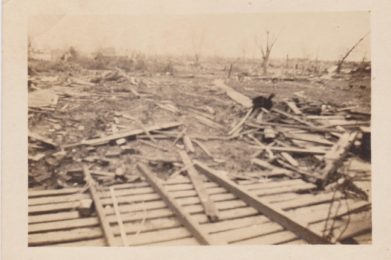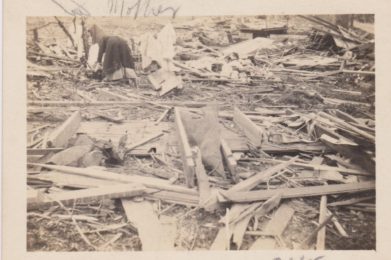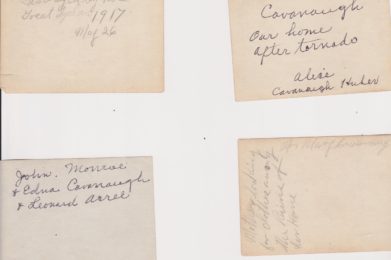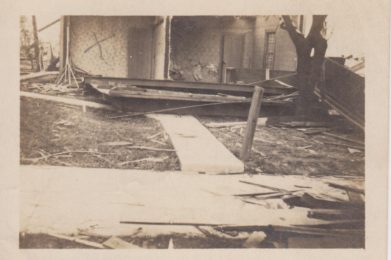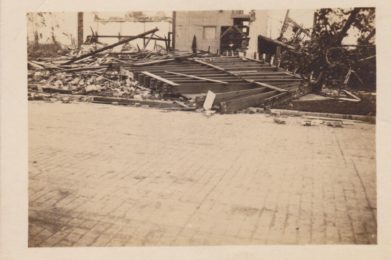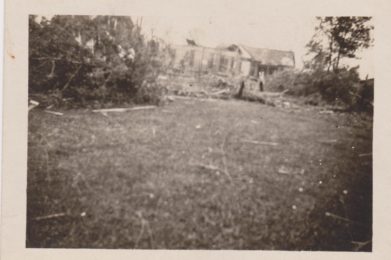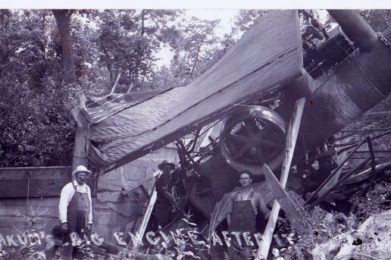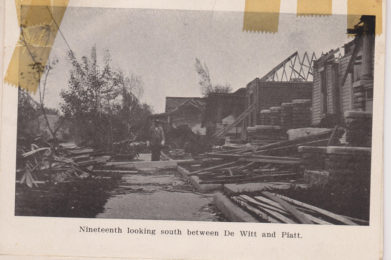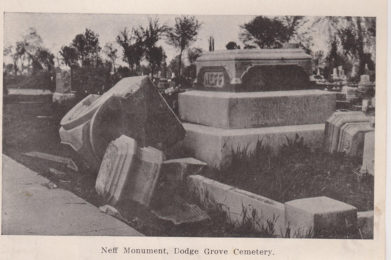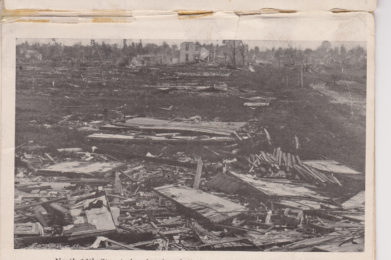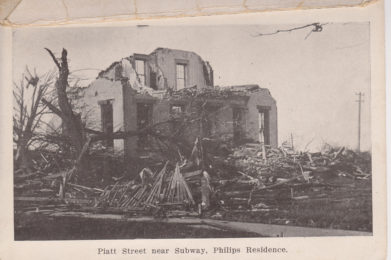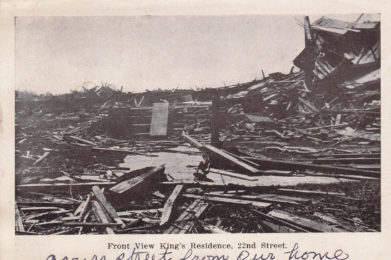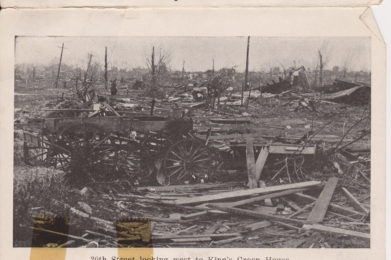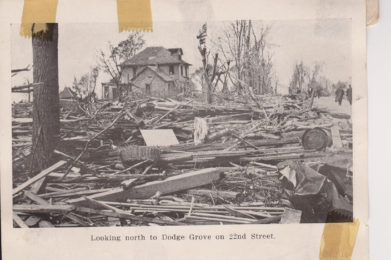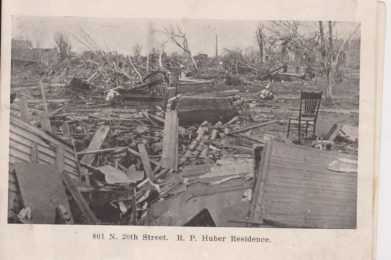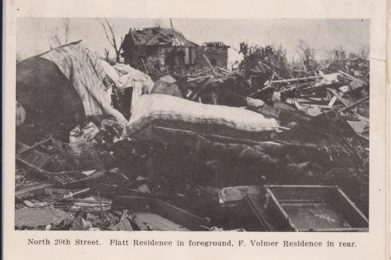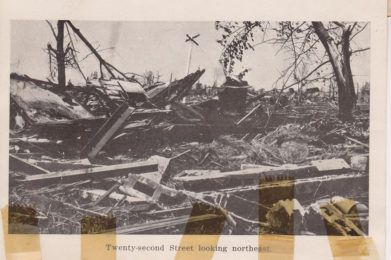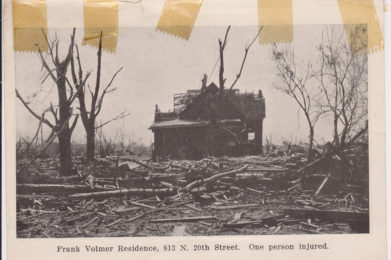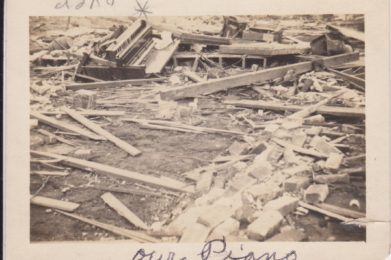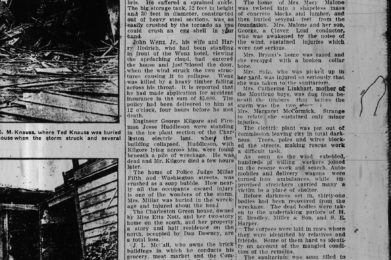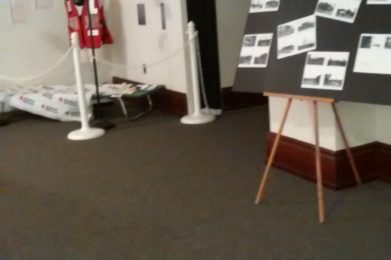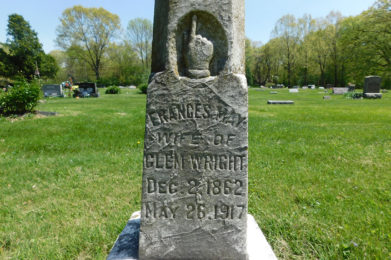
1917 Tornado
In the Path of the Storm
On May 26th, 1917, the third deadliest tornado disaster on record swept across Illinois. Mattoon and Charleston in Coles County were the most severely impacted communities. On that date, 101 people were killed across central Illinois, most of them in the Mattoon/Charleston area. Injuries totaled approximately 638 (www.weather.gov/ilx/mto1917).
Originally, this was believed to be a single tornado with a path 293 miles long, extending from the Mississippi River across from Louisiana, MO, across central portions of Illinois and Indiana, ending near Mount Vernon, IN, over a total time span of 7 hours 20 minutes. It was later determined to be 4 to 8 separate tornadoes; the Illinois portion was approximately 155 miles (including times it was aloft), over about 4 hours. The strongest part of the tornado, through Mattoon/Charleston, was estimated to have contained 120 mile per hour winds, and traveled at approximately 40 miles per hour (Report of Tornado Disaster 1918). This would classify it as an F2 (113-157 mile per hour wind speeds) of the Fujita Scale, but rating system was not developed until 1971. The National Oceanic and Atmospheric Administration later determined the tornado to be most likely equivalent to an F4 intensity (207-260 mile per hour wind speeds) at its strongest point on the original Fujita scale (www.weather.gov/ilx/mto1917).
The tornado was first registered 3 miles west of Mattoon due east, until it reached the city limits, where it swerved for a half mile to the north. At the Powell Lane Road it swept eastward into the heart of a thriving resident district in the northwest part of the city. It left a swath half a mile across (Report of Tornado Disaster 1918) and was approximately 2 ½ miles long and 2 ½ blocks wide (www.weather.gov/ilx/mto1917). From DeWitt Avenue, the center of the storm’s path, for 26 blocks there was ruin and destruction (Report of Tornado Disaster 1918).
In Mattoon, the tornado killed 53 and injured 409, destroyed 496 houses and partially destroyed 124, leaving 2,500 homeless, and damage estimates were near $1.2 million in 1917 dollars (www.weather.gov/ilx/mto1917).This would be equivalent to approximately 22.5 million dollars in damage today.
Additionally, 4 industrial plants and 3 frame churches were destroyed, 4 school buildings, the public mausoleum, cemetery, City Lighting Plant, Lighting Plant of the Public Service Company, Illinois Central and Big Four Railways, Western Union and Coles County Telephone Company all heavily damaged (Report of Tornado Disaster 1918).
The tornado then continued out of Mattoon toward Loxa, where it lifted. After 8 miles, the tornado touched down again. It struck from the West, near the Coles County fairgrounds and followed the Big Four tracks through the north part of the city (Tornado Swept Charleston Photographic Views). Here, the path was approximately 1 ½ miles long and four to six blocks wide (www.weather.gov/ilx/mto1917).
In Charleston, the tornado killed 38 and injured 182, destroyed 221 homes and partially destroyed another 265 (www.weather.gov/ilx/mto1917). The path of destruction, which passed a mile north of the State Normal School (now EIU) and was 1 ½ miles long by 600 yards wide, and damage estimates of $781,000 in 1917 dollars (www.weather.gov/ilx/mto1917). This would be equivalent to approximately 14.6 million dollars in damage today (a total of approximately 37 million dollars of damage in the county by today’s standards).
Additionally, the Whalen and Grant Elevator, Big Four Depot, Electric Plant, Anchor, Maples Hotel, Leaf Roundhouse, Armstrong’s Garage, Leaf Depot, Charleston Elevator, Big Four Freight depot, both Bottling Plants, Hampton Livery Barn, both lumber yards, and many other businesses and residences were heavily damaged or destroyed (Charleston Daily News).
And, in the words of Izora Story, writing a letter about the tornado, she said “there are many acts of heroism. The people who spent that awful night getting out the dead and wounded and caring for them, in finding lost children and other members of families and in chopping a way through the streets in the rain and mud and awful darkness with no light but lanterns will never be forgotten” (Coles County Historical Society Archive – Izora Story). And finally, she concludes by saying “we hope that this is the last tornado and that you will be spared ever going through anything like it” (Coles County Historical Society Archive – Izora Story).

